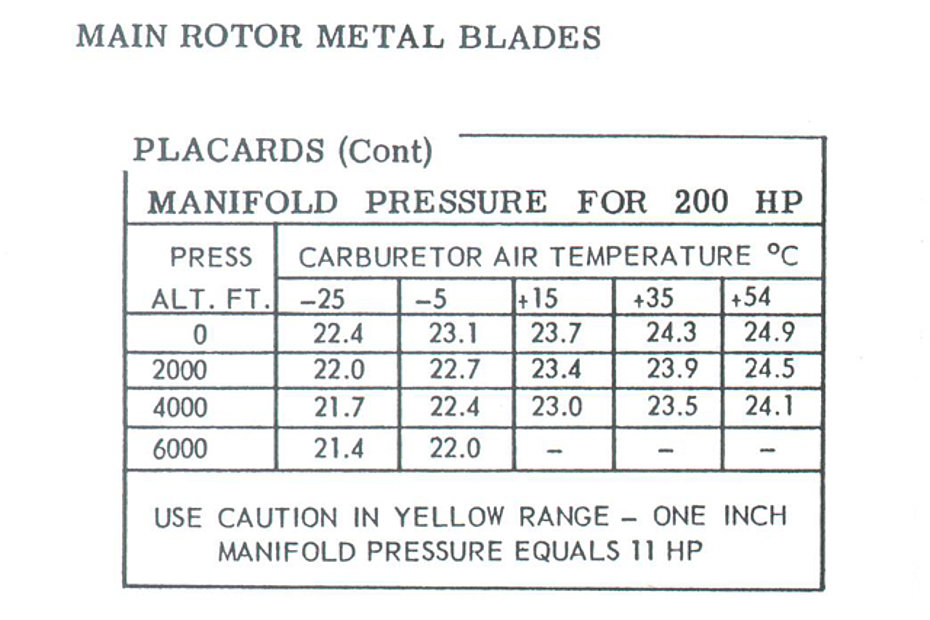
Bell 47G2 - History and technical description
Some historical notes
The Bell 47G2 manufactured by the Bell Aircraft Corporation is the successor of the Bell 47G. The two models are very similar, but the G2, which obtained the type certificate on the 20th of January 1955, is powered by a more powerful Lycoming VO-435-A1 engine.
There are several versions of this engine known with the designation –A1A, A1B, A1D, A1E and A1F, but all have a max power of 194/260 kW/hp.
However on this model the engine is derated to a maximum continuous rating of 149/200 kW/hp at 3’100 rpm, from sea level up to an altitude of 1’523 m (5’000 feet).
This mean that the pilot must strictly observe the placard with the manifold pressure limits.
Compared to the Bell 47G the G2 offers a higher max take-off weight of 1’111 kg (2’450 lbs) instead of 1’065 kg (2’350 lbs). However the payload is slightly lower because the Lycoming engine is heavier (177 kg instead of 141 kg of the Franklin 6V4-200-C32) and the G2 is equipped with more accessories (such as for example hydraulic power control).
The G2 is equipped with an electric starter initially installed on the center console with a turn-key. Later this was replaced with a button located on the top of the collective pitch lever.
The G2 was furnished with standard hydraulic boost servos (cyclic control). The system includes push-pull tubes, bell cranks, a hydraulic system, and provision for dual controls.
On the Bell 47G hydraulic boost servos were available as an optional.
Wood metal blades
At the beginning the G2 was delivered with wood rotor blades. The main blades were constructed of a laminated birch leading edge, incorporating a steel core for mass balance. The remainder of the blade was made of spruce and balsa covered with a Fiberglas cloth. The leading edge was provided with a metal bonded stainless steel cap extending from 24 percent chord forward. The tip area was provided with a balance and protective cap. The root was reinforced with bonded metal plates and safety locked by screw and bolts. A ground adjustable trim tab was provided on the outer trailing edge of each blade. Life of these blades was originally unlimited.
Later Bell introduced main rotor blades built entirely in metal, which were more robust and resistant.
On request of the operator it was possible to convert a G into a G2. Basically to do this it was necessary to replace the engine, the center frame and the engine basket.
The Bell 47G2 remained in production at Bell from 1955 until 1962 and is one of the most produced versions.
This model was manufactured under license in Italy from October 1955 and much later in Japan by Kawasaki.
In 1955 the price for a Bell 47G2 with a skid-type landing gear was about 39’500 US $ (corresponding to about 210’000.-- Sfr.) while the version equipped with a float landing gear cost 40’265 US $.
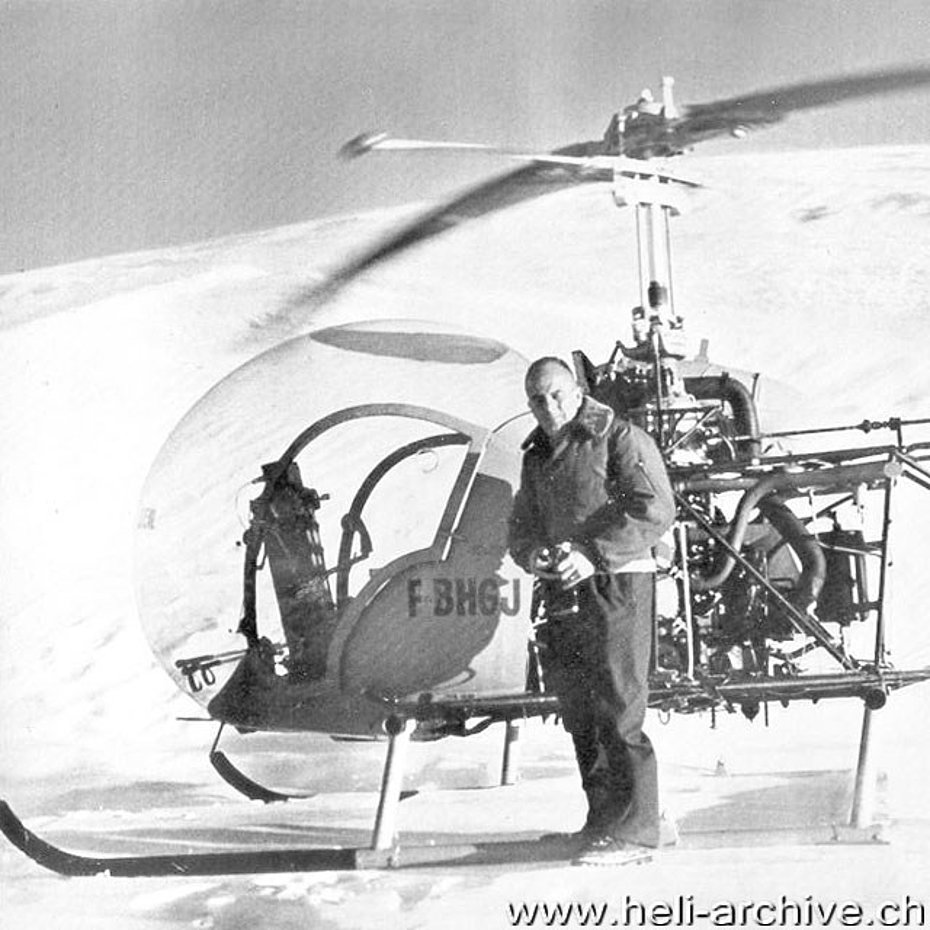
Landing on the Mont Blanc
There is a feat related with the Bell 47G2 which has passed into legend. It is the historical landing which made on June 6, 1955 on the summit of the Mont Blanc (4’807 m – 15’776 ft) the French pilot Jean Moine (1915-2000).
The helicopter registered F-BHGJ (serial number 1342) was the first G2 manufactured by Bell. To establish this record the helicopter was lightened as much as possible. Some non vital parts such as for example the battery, alternator, second fuel tank, were taken down.
According to Moine, who was accompaigned by the mountain guide André Contamine, the historical landing was made without particular difficulty.
Employ
Civilian Bell 47G2 were primarily used for the transportation of passengers and material, agricultural operations, transport of mail, observation, reconnaissance, photographic flights, and school.
Technical description
The Bell 47G2 is a three place helicopter (the pilot seats on the left with the two passengers seated side-by-side on the same bench) of standard configuration.
It has a two-blade main rotor with a stabilizer bar and a two blade tail rotor.
The fuselage consists of three main sections: the cabin, the center frame and the tail boom.
The cabin is protected by a "bubble" made of Plexiglas (one of the main characteristic of this model which gives unequalled visibility in all directions), and is accessible from each side through quickly removable doors. Occupant’s visual on this helicopter is remarkable.
A firewall of corrosion resistant alloy is installed between the engine compartment and the cabin area.
The center frame, or engine section, consists of a tubular structure of welded steel tubing. This section provides support for the seat, engine and accessories. It is provided with fittings for attachement of the skid type landing gear and provisions for the attachement of float type landing gear.
The tail boom, of triangular section, consists of a structure of welded steel tubing. Bolts are used to attach the tail boom to the center frame.
A synchronized elevator constructed of aluminum alloy is installed on the tail boom. Its motion is controlled by the fore and aft cyclic control stick. The elevator is attached to the tail boom by means of anti-friction bearing and bolts. The elevator makes cabin load variation less critical and increases maneuverability.
A two blade tail rotor is installed on the aft end of the tail boom, and is driven by an auxiliary shaft connected to the free wheeling side of the transmission. The tail rotor blades are constructed of aluminum alloy.
An aluminum alloy, tubolar type rotor guard, is installed to protect the tail rotor blades, and acts as a personnel guard.
Engine
The helicopter is powered by a six-cylinder horizontally-opposed air-cooled Lycoming VO-435-A1 with a maximum power of 194/260 kW/hp at 3'100 rpm. The helicopter has a two-stage planetary transmission with a 9:1 reduction ratio.
The two interconnected gravity fuel tanks located on the centre of gravity have a total capacity of 162 litres. A selector permits to separately read the quantity of fuel in each tank.
The electrical system incorporates a 50 ampere 28 volt generator, and a heavy-duty battery for quick, dependable engine start. There is obviously also an external power receptacle.
Performance data
With a gross weight of 1'111 kg (2'450 lbs) the Bell 47G2 with metal rotor blades has a max. cruising speed (at sea level) of about 136 km/h. The never exceed airspeed from sea level up to an altitude of 430 meters is 161 km/h. From this altitude up the cruising speed must be decreased of 1.84 km/h (1 knt) for each additional 100 meters (305 ft) of climb. A sea level the maximum rate of climb at 72 km/h (45 mph) is 245 m/min (800 ft/min).
At its maximum gross weight the helicopter has a service ceiling of 4'022 meters, while the hovering ceiling in ground effect (IGE) is theoretically possible at an altitude of approximately 3'047 meters (10’000 ft), or 975 meters (3’200 ft) out of ground effect (OGE). The maximum range is 383 km.
These performance data are based on operation in still air (zero wind) under NACA standard atmospheric conditions.
Rotor and engine limitations
During normal operations in flight the main rotor rpm must be kept between 294 and 360 rpm, while the engine rpm must be kept between 2'900 and 3'100 rpm (oil pressure 40-60 psi and cylinders head temperature 100 to 224°C).
Dimensions, weights and payload
The main rotor of the Bell 47G2 has a diameter of 10.72 m, while the tail rotor has a diameter of 1.72 m. The fuselage has a total length of 8.33 m. The max height of the helicopter is 2.85 m.
The empty weight of the helicopter fitted with a skid-type landing gear is of approximately 725 kg (1'600 lbs), while its max take-off weight (MTOW) is 1'111 kg. Deduced the std weight of the pilot (77 kg/170 lbs), and with a fuel and oil reserve for one hour of flight the payload is approximately 273 kg (600 lbs).
Autorotation
In case of engine or tail rotor failure the pilot must immediately execute an autorotation maintaining an indicated airspeed of at least 64 km/h (40 mph). At an altitude of 15 metres (50 feet) over the landing place he must decelerate constantly. At 3 metres (9-10 feet) over the ground the pilot must apply collective pitch as necessary in order to cushion the landing.
However in the event of an engine failure hydraulic control is lost. So in addition to correctly entering and executing the autoration to "flare, level, and cushion", the pilot as the additional workload of managing the cyclic without hydraulics. A later version, the Bell 47G3-B2A, used the 900 series transmission that supported the hydraulic pump allowing the hydraulics to operate after an engine failure and during autorotation.
Accessories
A number of accessory kits were available for installation on the Bell 47G2 which multiplied its versatility. Among them there were dual controls, night flight equipment (which included position light, landing light, instrument panel illumination and cabin interior light), floats for operation from land, water, marsh, ice or snow, external litters attached to the cross tubes of the landing gear, spraying, dusting or fogging equipment, kit for the transportation of sling loads, snow shoes, external cargo carriers, radio (there were several radios available such as for example Lear LTR-6, Lear LTRA-6, ARC-12 with variable prices ranging from 860 to over 1’375 US $), cockpit heater and defroster, rotor brake, fire extinguisher, first aid kit and a shoulder harness kit.
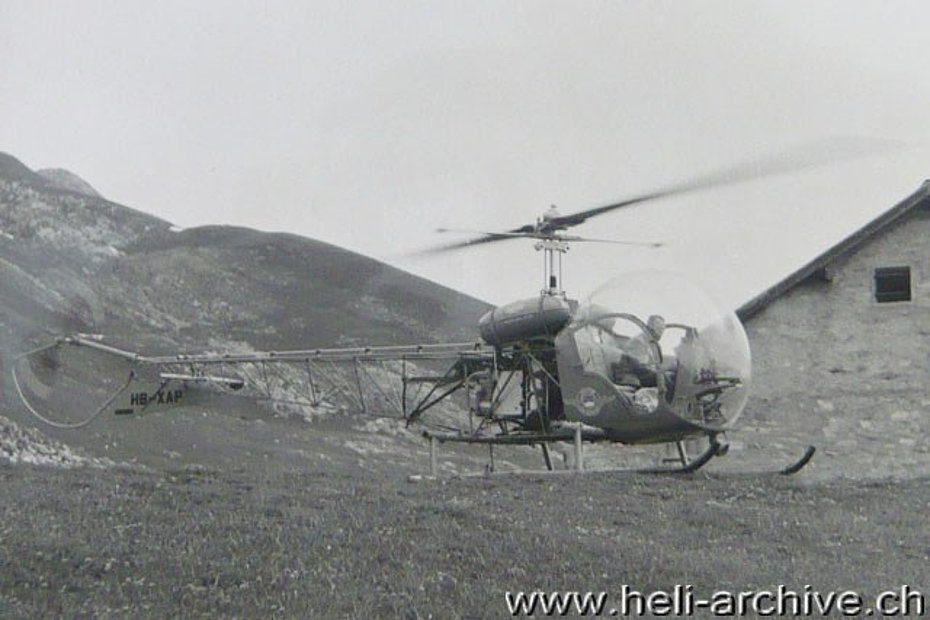
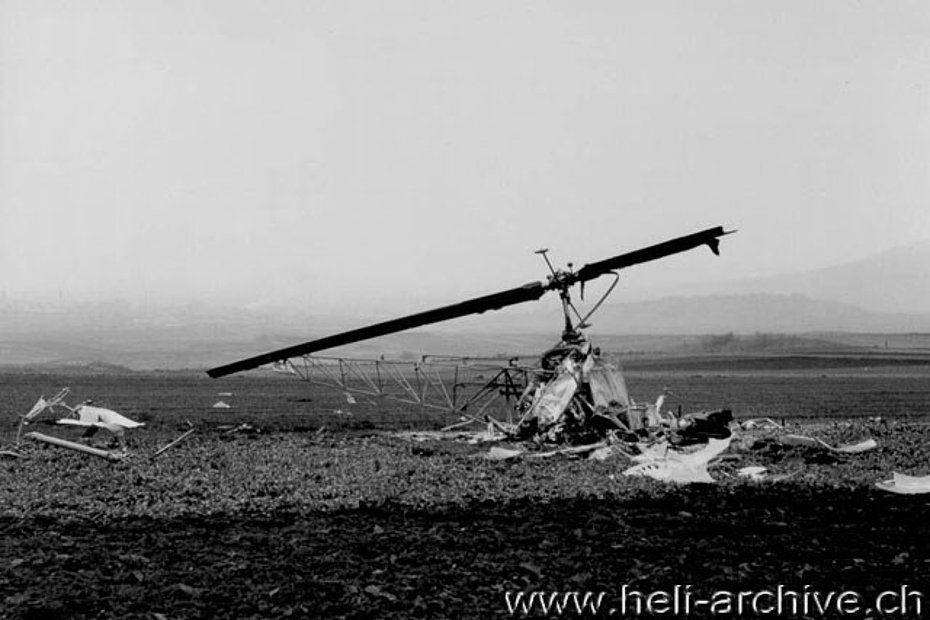
The Bell 47G2 in Switzerland
The Bell 47G2 was presented for the first time in Switzerland on the 30th of June 1955 by the French pilot Jean Moine (1915-2000). In Europe the latter was a true pioneer of the helicopter’s use in mountain. For the demonstration Moine used the F-BHGJ, the same helicopter which landed on the Mont Blanc some weeks earlier.
To impress the audience after the take-off Moine raised vertically in the sky like a lift up to an altitude of 1'000 meters (3000 ft).
The first Swiss company to purchase a Bell 47G2 has been Pilatus Air Service.
The helicopter, which was also the first G2 manufactured under license in Italy by Costruzioni aeronautiche Giovanni Agusta, was registered HB-XAP (s/n 65 b/y 1955) was flown from Cascina Costa (Italy) to Kloten (Switzerland) by Oswald Matti on the 28th of December 1955.
Between 1956 and 1957 the helicopter was not flown often and logged only 282 hours of flight. From the 1st and the 4th of June 1957 the HB-XAP was used by Sepp Bauer to complete the training of the famous Swiss rescue pilot Hermann Geiger, who learn to fly helicopters in France at the Fenwick school, where Moine was employed as chief-pilot.
From March 1958 the HB-XAP was based in Germany where it was intensively used to train the Bundeswehr’s pilot. In the following months it logged several hundreds hours of flight.
Unfortunately on the 19th of November 1958 during an autorotation exercise the aircraft was damaged. Nor the instructor nor the student were injured in the accident, but the helicopter caught fire and was completely destroyed by the flames.
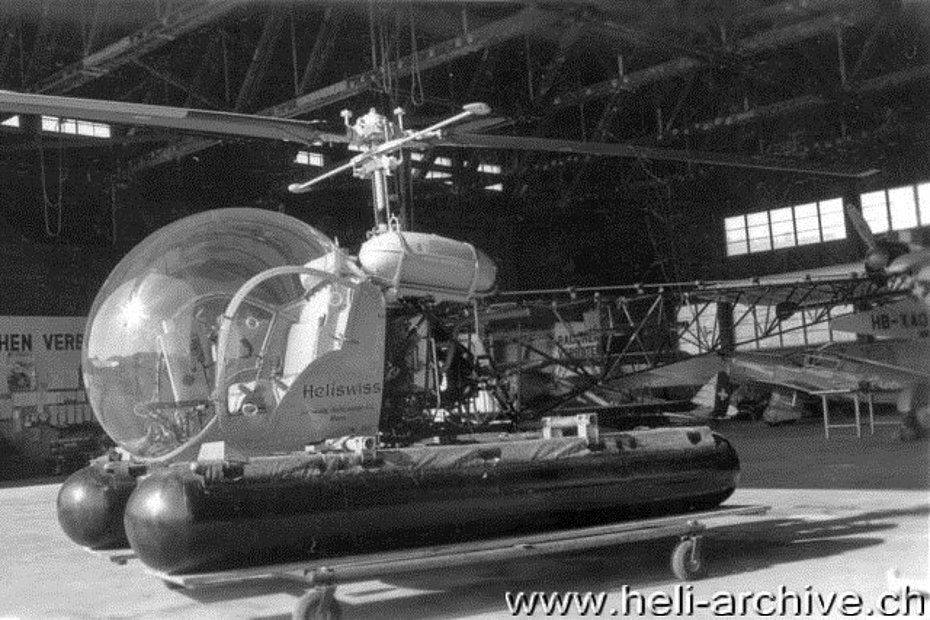
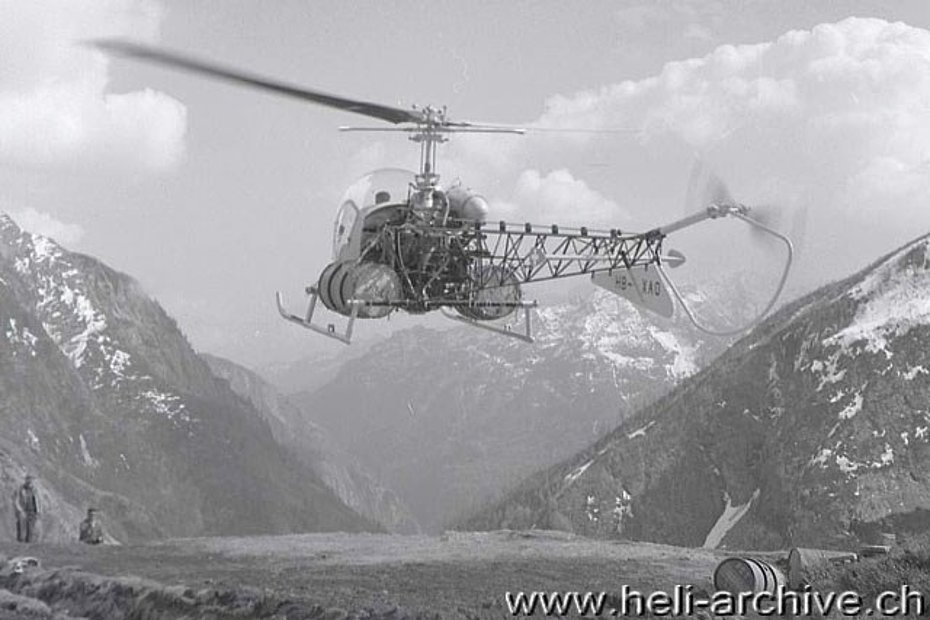
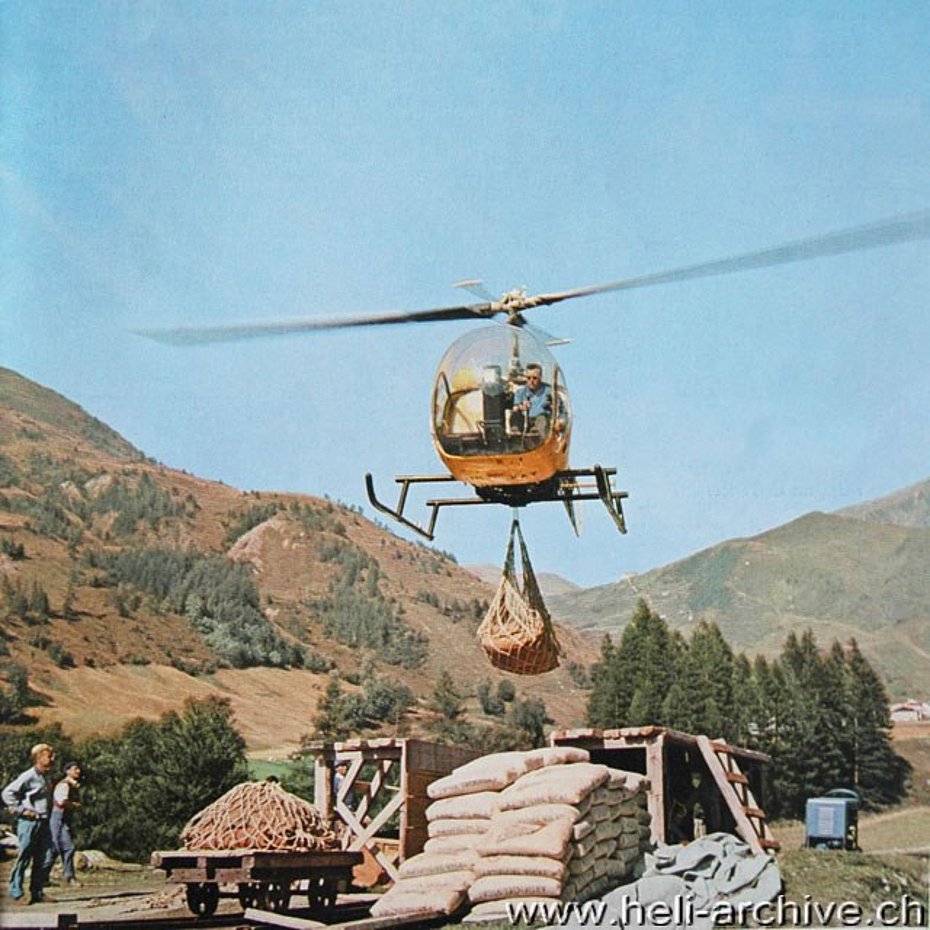
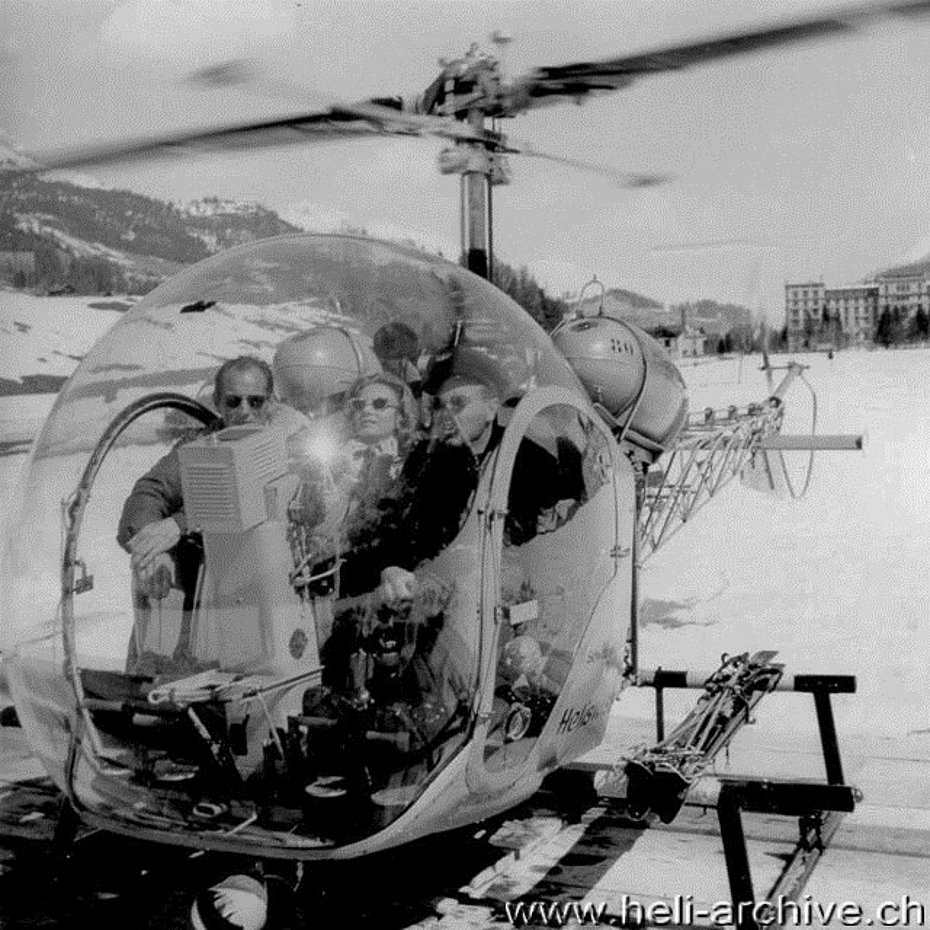
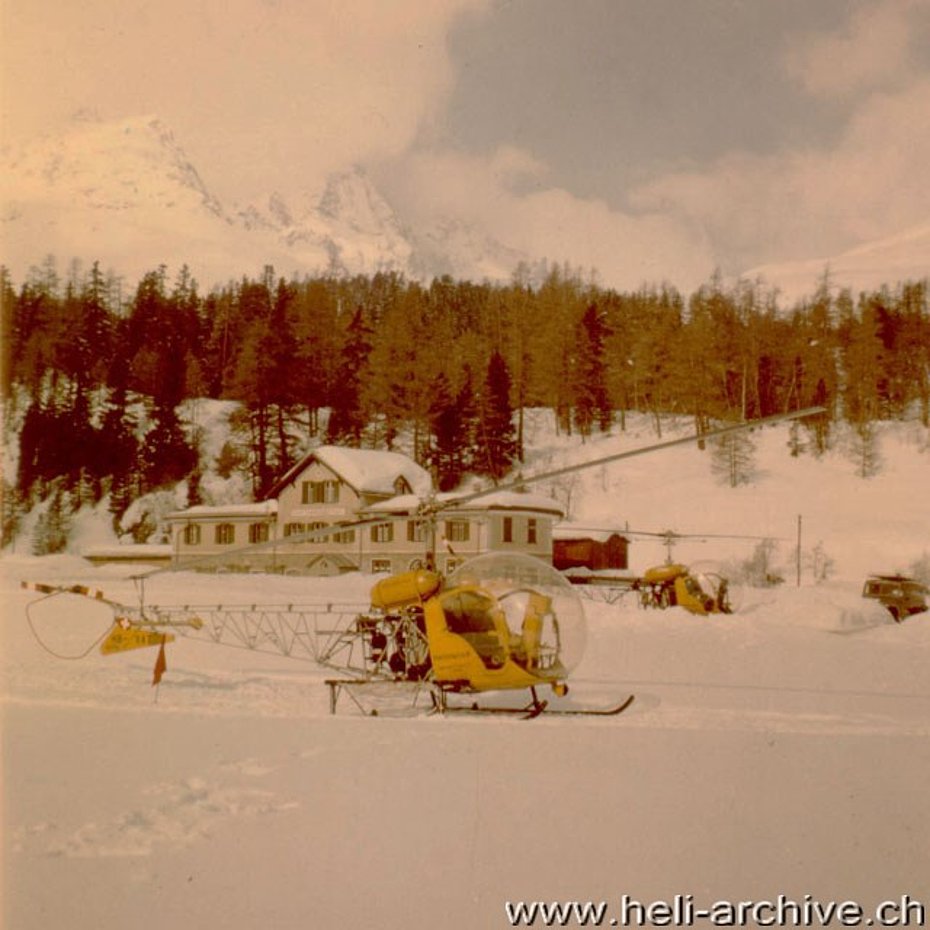
Heliswiss' Bell 47G2 fleet
Heliswiss immediately realised that the G2 better suited its need and decided to replace the Bell 47G HB-XAE with the Agusta-Bell 47G2 HB-XAO (s/n 116 b/y 1956).
The new aircraft was ordered on the 16th of August 1955 and delivered on the 20th of March 1956. It was purchased for a price of about 210’000 Sfr. and was equipped with dual controls, night lighting equipment, and barycentric hook.
The service life of this helicopter was quite limited. On the 24th of September 1956 it was damagaed at Innertkirchen (Berne Alps) during a series of transportation flights. The helicopter was repaired and since March 1957 it was again used. One year later, on the 10th of March 1958, during a series of ski flights the helicopter was newly damaged in Gstaad/BE. It was repaired and then sold as YU-HAO.
To replace the HB-XAO Heliswiss purchased HB-XAT (s/n 1632 b/y 1956), a second hand machine previously registered N2808D, which entered in service on the 20th of March 1957.
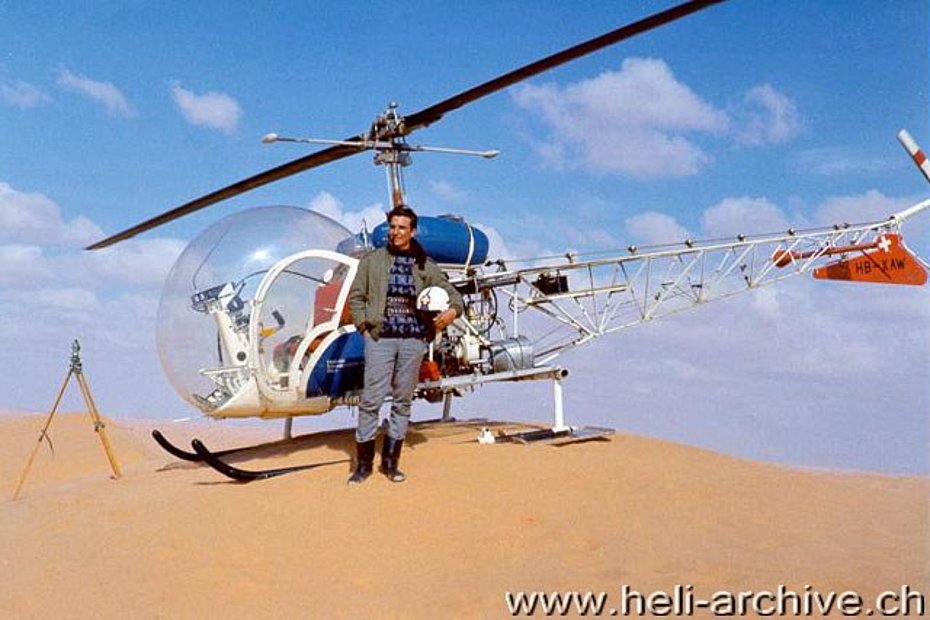
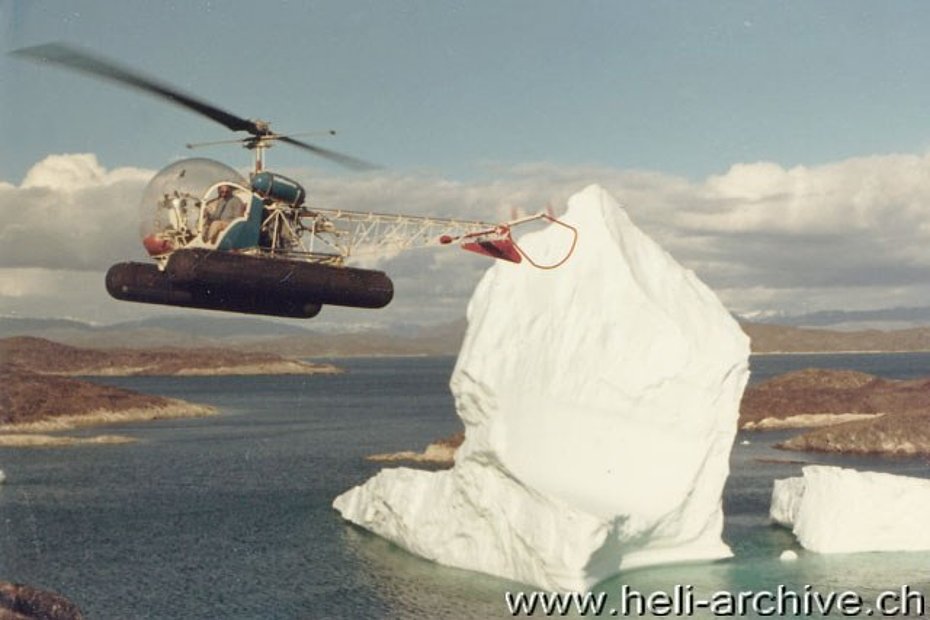
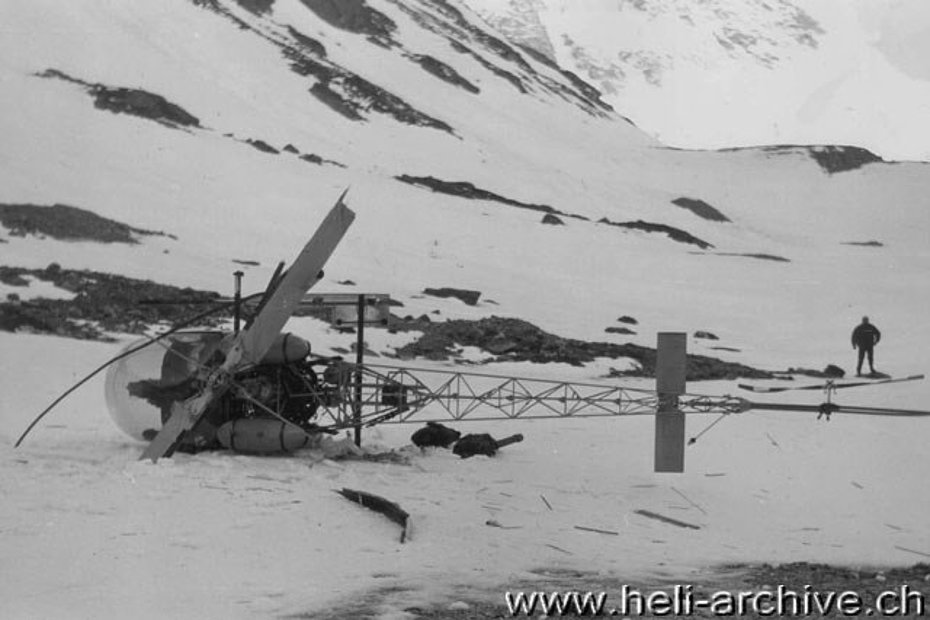
In the course of 1958 two more aircraft were purchased: HB-XAW (s/n 2180 b/y 1958) and HB-XAX (s/n 2195 b/y 1958). For a short period Heliswiss also rent the Agusta-Bell 47G2 F-BDVL usually in service with Briand SA, an aerial company based in Paris.
The helicopters mentioned were mainly used for the transportation of people and goods the Swiss Alps.
In the role of aerial cranes the G2 were able to lift a payload of 200 kg (445 lbs) up to an altitude of about 3'000 meters (9'850 ft).
Moreover they were used for other tasks such as for example pilot training, spray flights, advertising, photographic and search and rescue flights on behalf of the Swiss Air Rescue Guard.
With its (Agusta-)Bell 47G2 fleet Heliswiss during the Winter 1957 begun a new kind of activity: the heli-skiing.
Until this moment during the long Winter months helicopters were not in fact often used. For this reason Heliswiss decided to deploy its aircraft in the most known Swiss ski resorts, such as for example St. Moritz/GR and Gstaad/BE.
In the Grison Alps the helicopter transported the skiers on the top of the most famous mountains such as for example Corviglia (2'486 m/sm – 8'158 ft), Piz Rosatsch (2'950 m/sm – 9'680 ft), Piz Kaesch (3'100 m/sm – 10'175 ft) or Piz Corvatsch (3'250 m/sm – 10'666 ft).
For information the transportation on the Piz Corvatsch required about 15 minutes and cost 140.— Sfr., a lot of money at that time! It is no coincidence that the main customers which used the helicopter were the rich families such as for example the Onassis and Niarchos.
"To control the helicopter at these altitudes with two passengers on board required great attention" told Walter Demuth, one of the first helicopter pilots in Switzerland.
"The place in cabin was quite limited and the passengers were not confortably seated next to the pilot. In return they had an exceptional visual in all directions, which is probably the characteristic most appreciated of this helicopter".
Among the most important feats related to the Bell 47G2 in Switzerland to mention the landing made on the 3rd of March 1957 by Leonard Kunz and Demuth on the Piz Zupo/GR at an elevation of 3'912 m (12’840 ft).
The (Agusta-)Bell 47G2 were intensively used by Heliswiss until the mid '60s. Then they were mainly used for the pilots training, or scenic and photographic flights.
From 1963 Heliswiss started in fact to use the (Agusta-)Bell 47G3B-1, which had a more powerful turbocharged engine, better performances and a greater payload.
During the long period of service Heliswiss' G2 were used worldwide, from the hot Afrian deserts to Greenland.
The last aircrafts of this series were withdrawn from the Swiss helicopter register around the mid '80s.
Other Swiss helicopter operators used this model. Among them to mention for example Gribair (HB-XCH), Eliticino (HB-XME, HB-XOP), Säntis-Heli (HB-XHX), Heli-Neuchatel (HB-XIE) and by the end Francis Girard (HB-XIY).
The HB-XAW is that which remained longer in service. It was used by Heliswiss from 1958 until the 9th of April 1980 when it was involved in an accident where the pilot Jean Seydoux, at that time the most experienced Swiss pilot with over 10'000 hours of flight under his belt, lost his life along with a student. The helicopter hit the wires of a power line neear Kiesen/BE during a training flight.
Interesting notes
In January 1958 Bell Helicopter Corporation announced to commercial operators a 100% extension of the major maintenance inspection period, from 600 to 1'200 hours. The extension was based on 55'000 hours of flight operation experience accumulated on 100 Bell 47J Ranger at work troughout the world. Model 47G and G2 were also approved for the 1'200 hours inspection period.
Of course commercial helicopter's operators greeted the news with great enthusiasm.
Videos
Have a look to these videos to watch HB-XAX and HB-XCH in action:
https://www.youtube.com/watch?v=aZX-pMEaVmo
https://www.youtube.com/watch?v=5sRudNMtxZQ
HAB 03/2012

